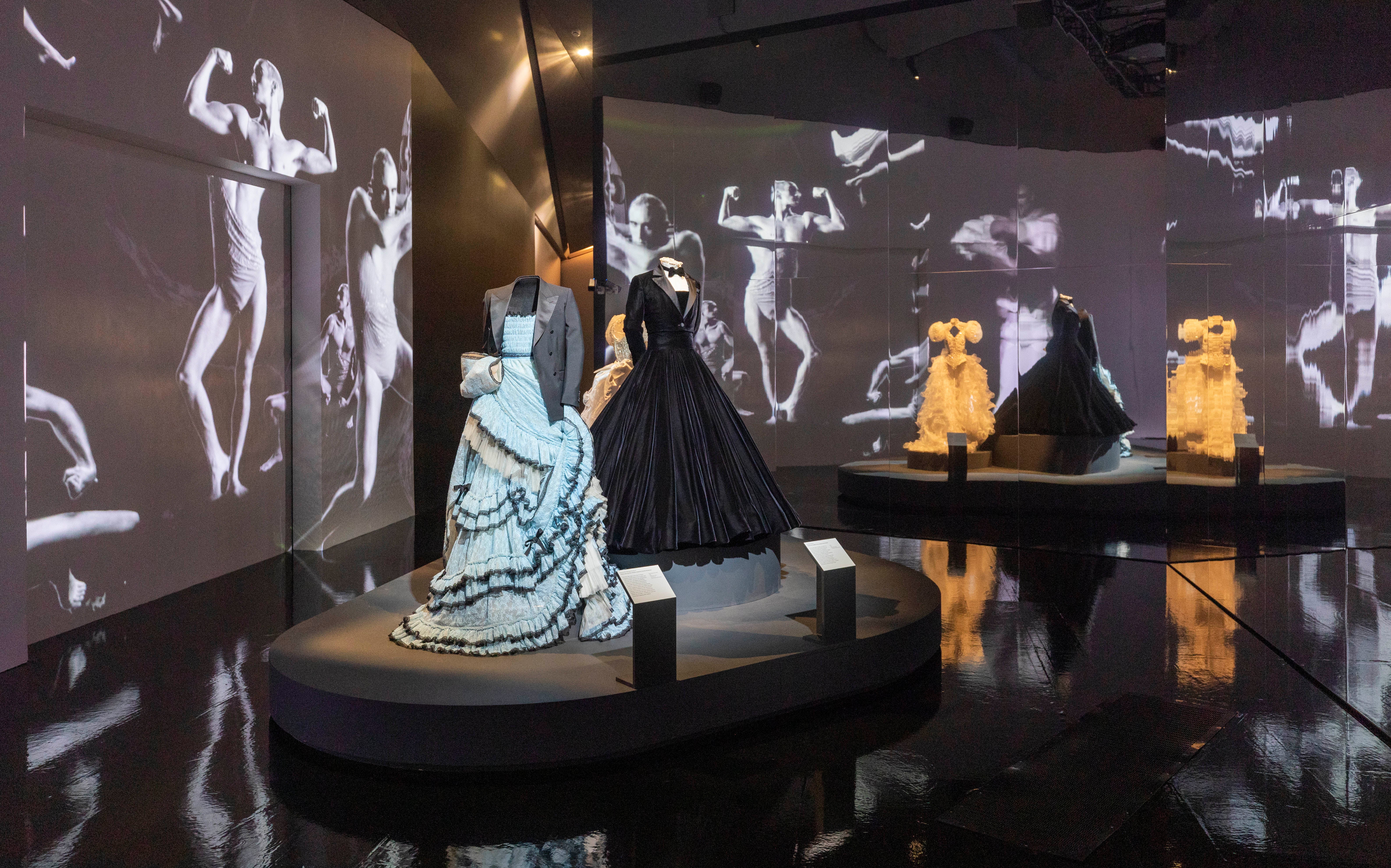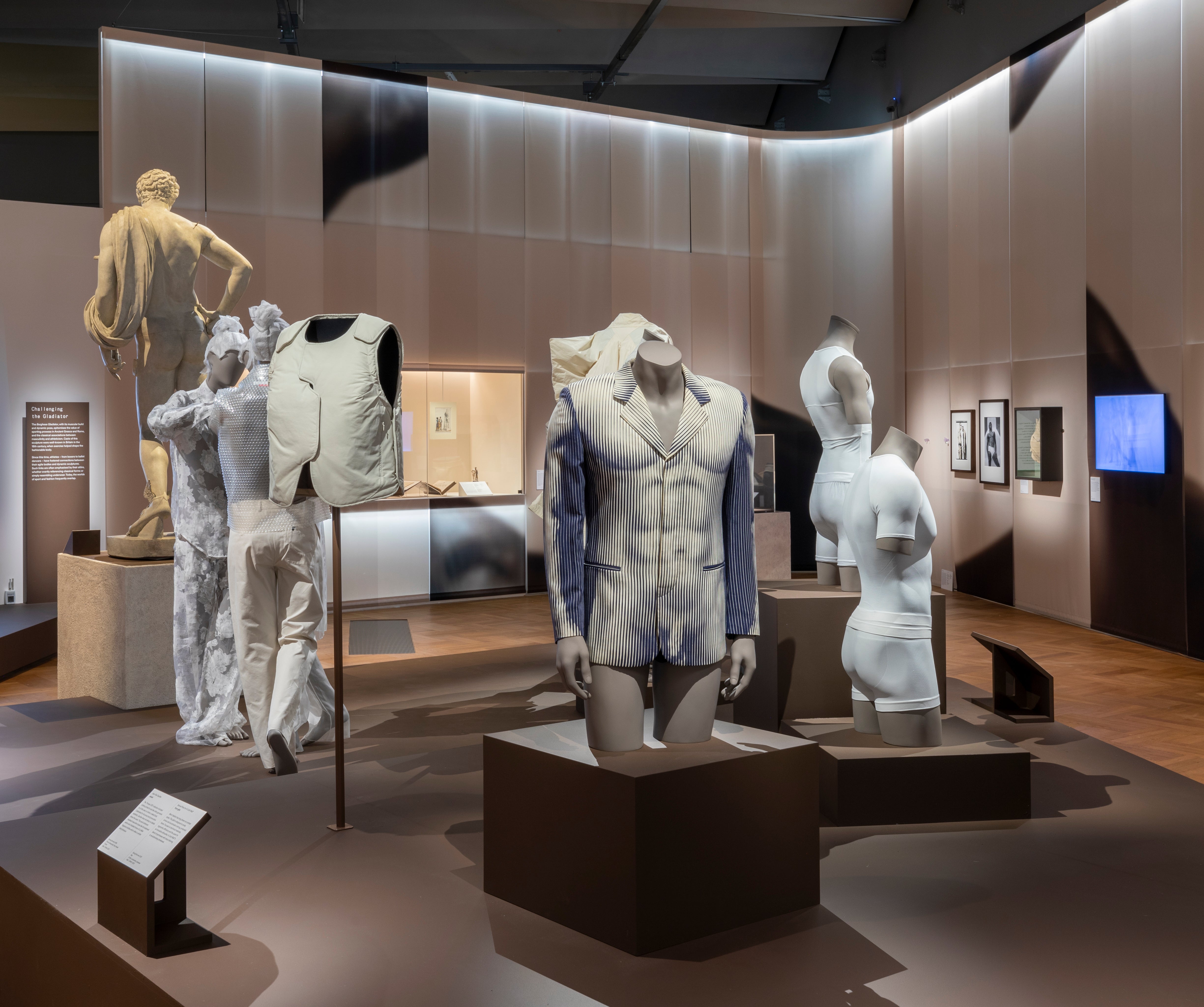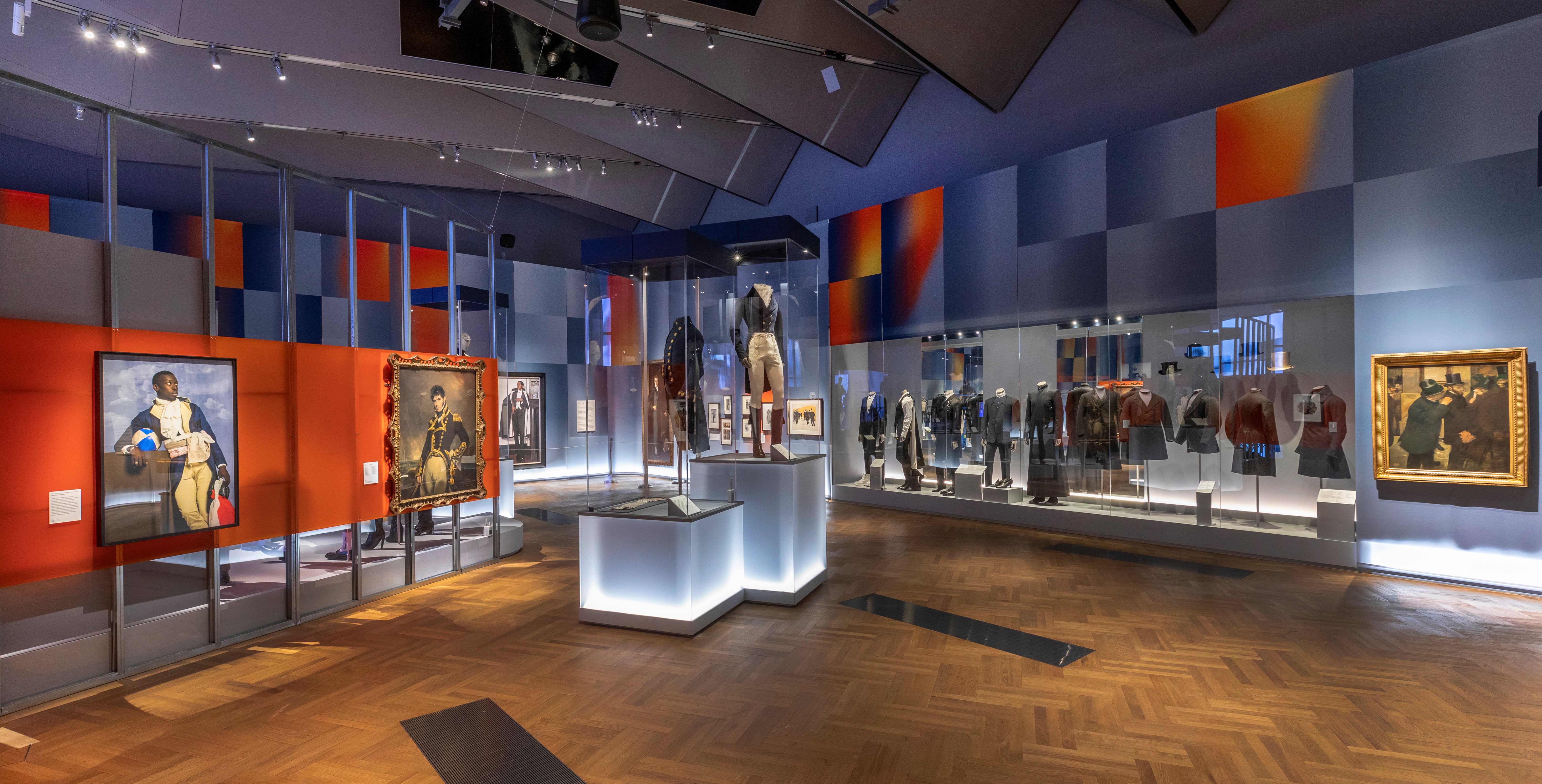Fashioning Masculinities at the V&A Review: A marvellous celebration of gender fluidity
The Victoria and Albert Museum’s latest fashion blockbuster is a toe-dipping introduction seeking to defy our contemporary perceptions of masculinity, writes Harriet Hall


Your support helps us to tell the story
This election is still a dead heat, according to most polls. In a fight with such wafer-thin margins, we need reporters on the ground talking to the people Trump and Harris are courting. Your support allows us to keep sending journalists to the story.
The Independent is trusted by 27 million Americans from across the entire political spectrum every month. Unlike many other quality news outlets, we choose not to lock you out of our reporting and analysis with paywalls. But quality journalism must still be paid for.
Help us keep bring these critical stories to light. Your support makes all the difference.
“What is masculine and what is feminine, anyway?” Jean Paul Gaultier’s guiding principal while designing his 1997 Sari Suit (a literal mash-up between an Indian sari and a man’s suit), has felt more prescient than ever in recent years as gender, and dressing gender, has become a hotly contested topic.
Take the furore that followed Harry Styles’ appearance on the cover of US Vogue in December 2019. You might assume the singer had made some sort of profane gesture or revealed something wildly controversial in the accompanying interview. Neither were in fact the case – it was the singer’s apparel that so irked people: a powder blue several-tiered Gucci gown with black lace trim, worn under a tuxedo jacket. A straight man in a dress on the cover of a fashion magazine was enough to spark cries from some corners of the Internet to “bring back manly men”. I suspect the curators of the Victoria and Albert Museum’s latest blockbuster Fashioning Masculinities: The Art of Menswear, would get a kick out of taking these malcontents on a tour of the exhibition.
Given the boundless creativity found in womenswear – displayed in the museum’s most recent blowout dress exhibitions, Christian Dior: Designer of Dreams; Balenciaga: Shaping Fashion and Mary Quant – it’s little wonder that menswear has taken a backseat on the roster. This is the V&A’s first major exhibition dedicated to it.
Exploring three themes: Undressed, Overdressed and Redressed, curators Claire Wilcox, Rosalind McKever and Marta Franceschini carefully unpick our preconceptions of European ideals of masculinity, unravelling crisp Saville Row tailoring and ambushing us with pink, florals and velvet.
An opening quote from Gucci creative director Alessandro Michelle, gives visitors a hint of what’s to come: “In a patriarchal society, masculine gender identity is often moulded by violently toxic stereotypes […] Any possible reference to femininity is aggressively banned, as it is considered a threat against the complete affirmation of a masculine prototype that allows no divergencies. There is nothing natural in this drift. The model is socially and culturally built to reject anything that does not comply with it.”

From there we are shown the making of masculinity, starting with the marble from which it was sculpted: the virile homoerotic nude male as imagined by the Greeks. Clay casts of the Apollo Belvedere and the Farnese Hermes stand on plinths, overlooking a brief chronology of men’s undergarments. We see how underwear that began as loose muslin in the 18th Century evolved into tight shapewear in the 2000s as men’s bodies came under increasing scrutiny.
Charting the history of menswear comes a close second to reassessing our understanding of gender in this exhibition. Anyone who thinks real men don’t wear pink ought to take a turn around the second room, Overdressed. For centuries, pink clothing was the ultimate symbol of wealth and power in Europe, a descendant of red – the hue of power and vigour – pink also represented an economic ability to import expensive dyes from South Asia and South America. Magenta, salmon and fuchsia were, until the 20th Century, as manly as it got.
Curators explore how menswear in the 1700s was just as glamorous as womenswear and how embellishment, gilding, lace and accessories were much less reliant on gender constraints as they were on class. Florals, paisley, shots of gold and silver threading, lavish embellishment and complex beauty routines were all symbols of the highest possible form of masculinity: elitism. A raspberry suit from 1760 sits next to contemporary hot-pink Harris Reed and Grace Wales Bonner designs and are displayed alongside Joshua Reynolds and John Singer Sargent portraits of noblemen in their glad rags. Masculinity was never staid, we made it so.
With items spanning from 1565 to present day, Fashioning Masculinities showcases 100 looks alongside 100 art works, showing – rather than telling, through classical sculpture, Renaissance painting, photography and film – how masculinity has been crafted and how that craft has evolved by designers from Raf Simons to Alexander McQueen, JW Anderson and Virgil Abloh, and how thinkers and artists from Oscar Wilde to Cecil Beaton and David Bowie to the Beatles, challenged preconceptions of manliness.
The third theme, Redressed, explores the archetypal male garment: the suit. We see its evolution and the draining of colour from menswear as it fades to black, from those worn by Beau Brummel to designers taking inspiration from English country tailoring and military dress. Curators juxtapose these with contemporary reimaginings from Rich Owens and Comme des Garçons and examples of how women like Marlene Dietrich used suiting to subvert expectations of their own sex.

A final display showcasing looks sported by today’s celebrities inverting masculine ideals, including Billy Porter’s Christian Siriano tuxedo gown he wore to the 2019 Academy Awards, Timothée Chalamet’s space age Haider Ackermann suit worn to the Dune premier and Bimini Bon Boulash’s Ella Lynch wedding dress, worn on Ru Paul’s Drag Race UK .
The timing of this exhibition couldn’t be better. Was it serendipity when Styles wore the dress in Vogue? “We like to think foresight,” says Wilcox. “The axis of the exhibition was shifted slightly to accommodate these moments, of course, but for a while now masculine fashion has been enjoying a period of unprecedented creativity.”
McKever adds, “We are seeing such such openness and visibility about gender nonconformance with dress at the moment, so to it feels like a really exciting time to look back on how masculinity has been refashioned through clothing over the centuries.”
It is by no means a definitive history, rather a toe-dipping introduction seeking to defy our contemporary perceptions of masculinity, and showcasing how masculine ideals have evolved in ways that will likely be surprising to many visitors that resist any diversion from the perceived norm. A thinly veiled agenda? Perhaps, but through being both confronting and celebratory it’s an exhibition that leaves you wanting more, excited to see where a new age of menswear and the celebrities championing it might lead us.
Fashioning Masculinities: The Art of Menswear is on at the Victoria and Albert Museum from 19 March – 6 November 2022. You can buy tickets here.
Join our commenting forum
Join thought-provoking conversations, follow other Independent readers and see their replies
Comments